In December 1942 Falkland’s Parish Church held a service for Poland;
the Reverend Russell’s sermon recalled that Scotland also knew
what a fight for freedom involved and he expressed the true sympathy
of all freedom-loving Scots. Wishing the Colonel and his troops best wishes
for Christmas 1942 he hoped that “it may be your final one in an alien, if friendly, land”.
A highlight of the troops’ stay in Falkland was on 13 March 1943
with the visit of General Sikorski, who was now also the Prime Minister
of the Polish Government in exile. He was accompanied by General Sosabowski.
Together they watched a shooting demonstration and inspected the troops
lined up along the House of Falkland drive.
Four months later General Sikorski died in a plane crash in Gibraltar.
By the summer of 1944 the Parachute Brigade had 3000 trained men. After
D Day they went to England for further training.
As happened in many places in Fife, the Falkland troops wanted to
leave a momento of their stay and 2nd Lieutenant Albin Bratek,
a peacetime civil engineer, was commissioned to design an icon for the chapel,
to be made by M Rozhanski.
Their subject was Our Lady of Ostrabrama, the Virgin of the Golden Dawn,
a much venerated shrine in Vilnius, Lithuania.
The story is that the men had a weekly collection to pay for it
and the metal used came from bully beef tins and used cartridge and shell cases.
The icon was dedicated on 24 June 1944.
The accompanying document which now hangs in the sacristy reads:
“To the Parish Priest of the Roman Cath. Church in Falkland.
We, the Polish Paratroops of the 3rd Battalion offer to you,
the People of Falkland a picture of Our Lady of Ostrobrama in souvenir
of our stay in Falkland and as a token of gratitude for all your kindness
and goodness you have shown us when stationed amongst you.
This picture must be kept for ever in the chapel of Falkland’s Palace.
May it cement the friendship of both our Nations”.
It was signed by their local commander, Captain Romuald Kornarzewski, and Father Misiuda.
The Parachute Brigade had anticipated being dropped into Warsaw in support of
a local uprising, but for political and logistic reasons this was blocked by Churchill,
Roosevelt and mainly Stalin –
many were already very wary of Uncle Joe’s ultimate ambitions for Poland.
In September 1944 the Brigade was in support to the 1st British Airborne Division
in Operation Market Garden, the bold but ill-fated air drop at Arnhem in the Netherlands
which was later depicted in the film A Bridge Too Far.
Some of the men who came to mass in Falkland each Sunday now lie
in the military cemeteries of Arnhem and Oosterbeek.
Amongst the Brigade’s 400 casualties was Father Misiuda who was killed
whilst crossing the Rhine on the night of 25 September.
The failure of Arnhem was followed by recriminations, and General Sosabowski,
who had been critical of the plan, was scapegoated and demoted.
In 1946, to avoid antagonising Britain’s ally Russia,
the Poles were not even invited to send troops to the Victory Parade in London.
The post-war years were not easy for the Poles in Scotland.
The majority were unwilling to return to a communist-dominated Poland, and
in some places, the previously warm Scottish welcome,
transformed into a “Poles go home” campaign with their Catholicism compounding the issue.
Whilst many sought work in England or emigrated,
Polish communities did emerge in Fife and throughout Scotland and continue to this day.
In 2006 Queen Beatrix of the Netherlands, saying she was
“redressing the historical error”, awarded her country’s highest military honour,
the Order of William, to Major General Sosabowski and his unit
for their distinguished and outstanding acts of bravery, skill and devotion
displayed during Operation Market Garden.
It is over 75 years since the icon of Our Lady of Ostrabrama
was presented to the Chapel Royal; it is a reminder of Falkland’s Polish friends
of the 3rd Polish Parachute Battalion.
© Marietta Crichton Stuart, 2021
